TL;DR
To use RGB LED accent lighting in a living room without headaches, start with warm ambient light (2700–3000K) and layer dimmable accents at low output. The best way to display collectibles in a living room is inside glass-front cabinets or focused niches lit with high-CRI, flicker-free LEDs aimed at 30 degrees. In a foyer, maintain a 36-inch clear path and mount sconces at 60–66 inches to greet guests with flattering, functional light.
The Problem With ‘Neon Everywhere’ Living Rooms
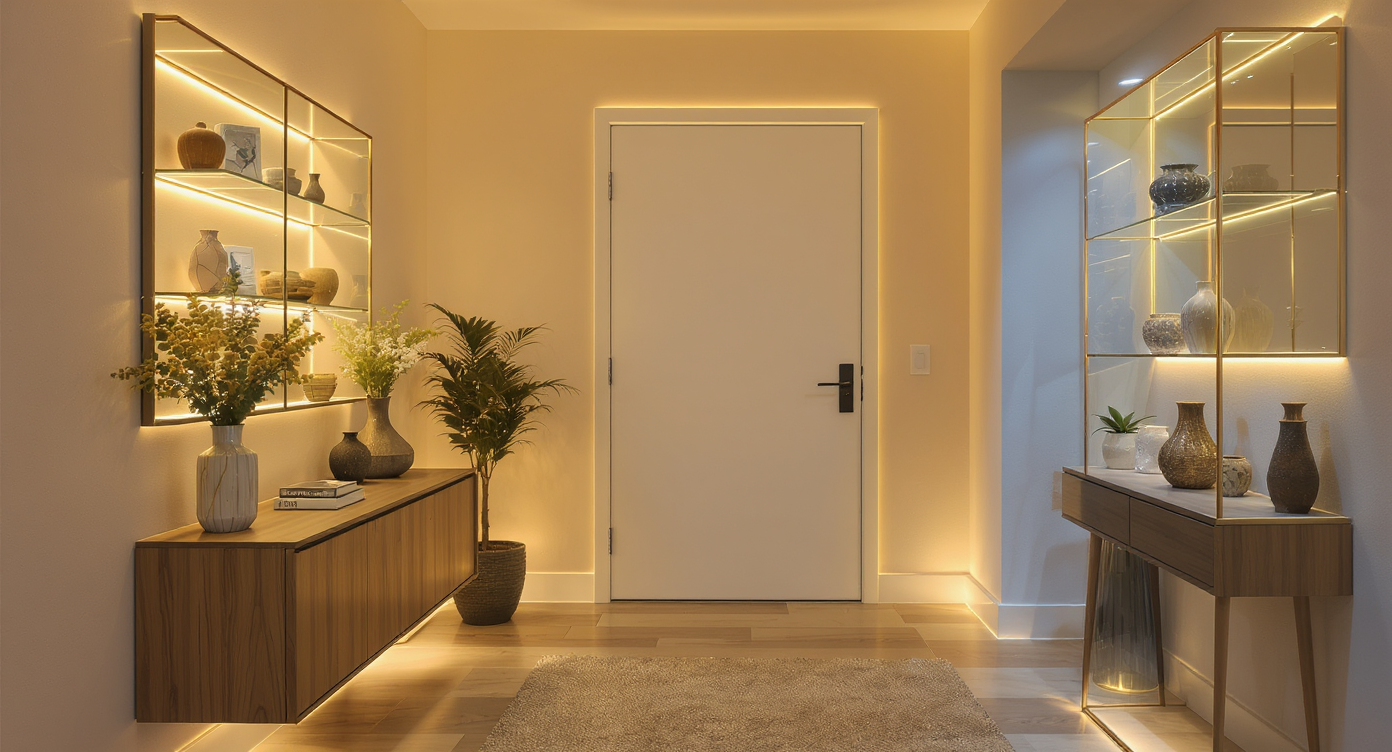
Smart, warm LED lighting in the foyer sets a welcoming tone and highlights collections without eye strain.
Design a living room and foyer with LED accent lighting that showcases collections beautifully while staying comfortable for eyes and guests.
Here’s the thing: saturated RGB can be thrilling in small doses, but when an entire living room glows magenta and cobalt, people report instant eye strain. I’ve seen rooms where the collections are incredible — film props, vintage toys, custom builds — but the lighting flattens all the detail into a purple haze. Guests can’t see true colors, and owners can’t relax.
If you love LED accent lighting, you don’t have to choose between “club” and “cozy.” The fix is a layered lighting plan that starts warm and natural, then adds color strategically. Pair that with smart display solutions and a foyer that actually welcomes people in, and your space reads curated, not chaotic.
The Essential Strategy: Layered Living Room Lighting + Foyer Design
For comfort and clarity, establish warm ambient light first (2700–3000K at roughly 10–20 lumens per square foot), then layer dimmable RGB as low-power accents (15–30% output) aimed at specific displays.
Start with a base. Use dimmable warm-white ceiling fixtures or lamps to create a neutral “daylight” for the room. A rule of thumb for living rooms is 10–20 lumens per square foot; choose bulbs with 90+ CRI so materials and skin tones look right.
Add task and focal beams. For reading and surfaces, target 30–50 foot-candles with lamps or adjustable spots. For art or shelves, place track or ceiling spots 2–3 feet from the wall and aim at a 30-degree angle to avoid glare.
Accents come last. Limit highly saturated RGB to under 20% of the visible field. Run LED strips, pucks, or sconces at 15–30% brightness so they color the background, not your eyeballs. Designers often advise confining color to reveals, toe kicks, or backlighting — not the entire room.
Mind the hardware. Choose flicker-free LEDs with high-frequency drivers or constant-current power supplies; this matters for pets and sensitive eyes. A quick test: shoot slow-motion video (240 fps) at your lights; banding means swap the driver.
Showcase collectibles like a gallery. Glass-front cabinets, shadow boxes, or acrylic vitrines keep dust down and raise the perceived value. Light shelves with 2700–3500K high-CRI strips or micro-spots tucked at the front lip, angled back at 30 degrees so faces and textures pop.
Control the whole scene. Use zones and scenes on a smart dimmer platform so you can tap “Movie,” “Clean,” or “Guests.” One user insight I hear often: colored lights are awesome if there is also a normal base light — the base is what makes the color look intentional, not chaotic.
Don’t forget the foyer. Maintain a 36-inch clear path (48 inches if two people pass), hang a mirror or art about 57 inches to center, and mount sconces at 60–66 inches. A ceiling fixture around 800–1200 lumens in 2700–3000K sets a flattering first impression.
TV and screens. Add 6500K bias lighting behind the TV at roughly 10% of screen luminance; it reduces eye fatigue and lets accents stay, well, accent.
Anecdote
A prop builder’s neon-heavy den felt like a set, not a home. He added 3000K ceiling light, moved RGB to toe-kicks and case backs, and put his hero pieces behind glass with high-CRI spots. Friends stopped squinting — and actually lingered over the builds.
Common Mistakes With LED Accent Lighting and Collections
Most discomfort comes from over-saturation, no warm baseline, poor CRI, and flicker-prone LEDs that read like a strobe to pets and sensitive viewers.
- All color, no base light. Why it happens: the novelty of RGB. Fix: keep a warm 2700–3000K baseline and cap color to under 20% of the scene.
- Blue/purple overload. Why: those hues dominate vision and flatten detail. Fix: use them as backlights; shift displays to 3000–3500K white for true colors.
- Flicker and eye strain. Why: cheap drivers. Fix: specify flicker-free, high-frequency or constant-current LEDs; verify with slow-motion phone video.
- Everything on open shelves. Why: it feels like a shop. Fix: mix closed storage with a few hero vitrines; rotate displays seasonally.
- Messy wiring and hot spots. Why: quick installs. Fix: hide leads in channels, diffuse strips, and aim spots to graze, not blast, objects.
Pro Tips From Designers and Prop-Lovers
To make collectibles read as design, light fewer things better, use high-CRI sources, and set pre-built scenes that default to warm white.
- Use dim-to-warm bulbs (3000K down to 2200K) in table lamps for instant “evening mode.”
- Pick 90+ CRI LEDs for shelves; reds and skin tones look right and photos look better.
- Create a two-color rule: one warm white for function, one accent hue for mood; avoid rainbow cycling.
- Angle art lights at 30 degrees and place track heads 2–3 feet off the wall to prevent glare.
- Bias light the TV at 6500K; it reduces perceived contrast and eye fatigue during movies.
- Cut dust with glass doors and microfiber + compressed air. Schedule a 15-minute weekly sweep.
- Pets first: if your dog avoids a room, your LEDs may flicker; replace drivers before assuming it’s behavioral.
- Reflection: when I help people switch to a warm base with restrained color, they stop apologizing for their room — guests stay longer.
Tools, Inspiration, and Publishing-Friendly Assets
Good tools make a huge difference — especially smart dimmers, high-CRI tape lights, and a visualizer to test scenes before buying.
- Smart control: Lutron Caséta, Philips Hue, or Aqara for reliable scenes and dimming.
- High-CRI tape and micro-spots: 2700–3500K, 90+ CRI, with aluminum channels and diffusers.
- Flicker-free drivers: constant-current or high-frequency (>1 kHz) supplies for comfort and pet safety.
- Planning: prototype shelf lighting with painter’s tape before committing to drilling.
- Visualize ideas fast: drop a photo into ReimagineHome to preview layered lighting, display cabinets, and foyer layouts with different color temperatures.
- Suggested image alt text: “LED accent lighting in living room with warm ambient base, high-CRI shelf lights, and glass display cabinets.”
- Suggested caption: “Warm 3000K base light with dimmed RGB accents lets collectibles shine without eye strain.”
Visualization Scenario
It’s 7:15 p.m. Your foyer glows softly at 3000K, a brass sconce at 64 inches framing a smoky mirror. In the living room, a warm ceiling wash sets the tone. Inside two glass cabinets, micro-spots catch the edges of a helmet and a vintage camera. A slim line of dimmed RGB traces the back of the shelves — a quiet halo, not a blare. The TV’s bias light hums at 10%, and the sofa looks like the best seat in the house.
FAQ: LED Accent Lighting, Collectibles, and Foyer Design
- How do I use LED accent lighting in a living room without headaches?
Use a warm ambient base (2700–3000K at 10–20 lumens per sq ft) and keep saturated RGB at 15–30% brightness and under 20% of the visual field. - What color temperature is best for displaying collectibles in a living room?
Designers often advise 3000–3500K, 90+ CRI for shelves and cases so colors read accurately and finishes look premium. - Are RGB LED lights bad for cats and dogs?
RGB isn’t the issue; flicker is. Choose flicker-free, high-frequency or constant-current drivers and test with slow-motion video to confirm. - How should I light shelves or a glass cabinet for my collection?
Mount high-CRI LED strips at the front lip or micro-spots aimed at 30 degrees, diffused, and wired to a dimmer for precise control. - What’s the right sconce height and walkway size for a foyer?
Mount sconces at 60–66 inches from the floor and maintain a 36-inch clear path; center a mirror or art around 57 inches.
Make It Feel Like Home (and Still Show Off)
The livable formula is simple: warm base, targeted beams, restrained color, and thoughtful display. When you start with 2700–3000K ambient light, your RGB accents read as mood, not mayhem. High-CRI, flicker-free LEDs let your props and memorabilia look like the treasures they are, and a clear, well-lit foyer sets expectations from the front door. You can keep the personality and still make it comfortable — for you, your guests, and your pets.
If you’re unsure where to begin, test scenes, aim for that 30-degree art light rule, and edit the number of objects you light at once. And if you want a second opinion before you buy a single bulb, upload a photo to ReimagineHome and try a few lighting schemes in seconds.
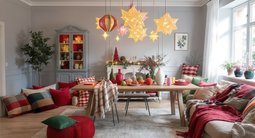

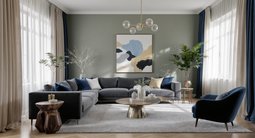
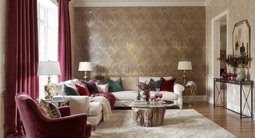
.svg)

.svg)
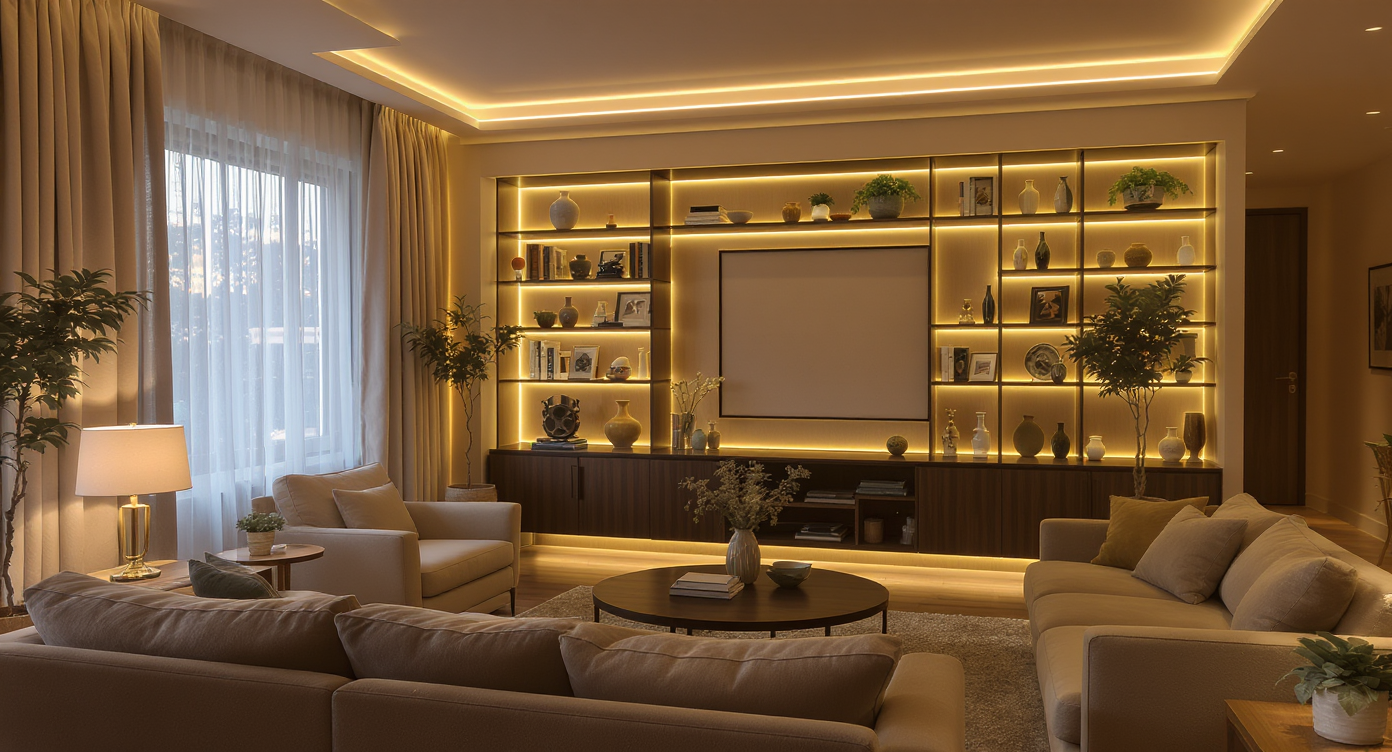


.png)